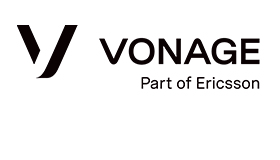Vonage discuss the power of building a true customer service culture, before presenting ten steps to help you get there.
In the interest of customer experience transformation, expand your viewpoint beyond individual customer interactions to the bigger picture of culture – a “customer service culture.”
Building and nurturing such a culture should be the foundation that supports and sustains superior customer service. It’s the bedrock upon which a properly designed and focused customer experience should rest.
What follows is a selection of what I call “customer service culture catalysts” to help get you on your way to creating and maintaining your customer service culture.
1. A well-worded mission statement
Short enough to be memorable, but long enough to be meaningful.
What you want here is something written in understandable English that can be memorized and internalized by all employees to help them grasp the essence of what your company is, or strives to be.
2. A longer but still-brief and carefully worded philosophical framework
I suggest it contain more than 9-12 items. You will also want to create a condensed version of this that’s small enough to be formatted on a laminated accordion card for each employee’s reference.
3. Explicitly stated and frequently demonstrated support for empowerment
Empowerment should be supported in your foundational documents. It should be reiterated in your training. It should be reinforced every day by people in leadership positions, who should be praising employees for exercising initiative rather than busting chops when empowerment goes wrong.
It’s easy to say, in a vague sort of way, that “employees are empowered to provide superior service.” But, to take empowerment beyond lip service, you need to make it clear that judgment calls, even those that prove to be expensive, are the prerogative of every employee (after a training period, of course).
Also, you need to bring this to life through management and leadership that is religious about praising employees for exercising their empowerment even when it doesn’t go perfectly.
Make clear that it is okay to make what seemed like the right call at the time even if the results don’t prove to be exactly what you were hoping for.
4. An employee selection (hiring) approach that stresses personality traits rather than prior experience
Different prospective employees will have different aptitudes for service, and if you want your culture to have the best chance of taking root and flourishing, employee selection is an essential place to start.
5. Involving the CEO or senior leadership in onboarding new employees
This is non-negotiable. If you don’t make it clear that you value employees’ service right when they join your company, and you don’t take this important early time to stress what is important in your organization, your culture is doomed to emerge haphazardly rather than take the form that you hope for.
6. A daily “customer service minute” (or lineup, or huddle—it doesn’t matter what you call it) ritual
Start every day–or every shift, if you have more than one–discussing a single principle of customer service excellence.
By having a different employee leading your huddle every day, this ritual becomes a multi-pronged catalyst of culture, it directly provides learning to all who attend.
Also, it develops leadership skills among the employees who lead, it fosters togetherness and team spirit among the attendees and it provides an opportunity to recognize employees for the great service they’ve provided.
7. Managing from the floor
Managers who hide in their offices miss their chance to lend their much-needed support to a budding service culture.
8. In-depth customer service training
Maybe this doesn’t seem like a cultural item but the principle is inescapable: in-depth customer service training is essential.
Having the best-intentioned, most carefully selected employees simply isn’t enough if they don’t receive the training they need to do their best.
9. An ethos of lateral service
This means an expectation that there’s no such thing in the organization as “not my job.”
It’s demonstrated when everyone, including senior staff, pitches in to get things done in crunch time (like Zappos CEO Tony Hsieh, who famously mans the phones during the holiday rush).
10. An “all-hands” approach to solving customer service problems once and for all
Encouraging involvement from all departments after a customer service mishap occurs, to identify what led to the problem and find ways to prevent it in the future.
Obviously, this has direct value in improving results, but it has cultural value as well by demonstrating what is valued within your organization.
This blog post has been re-published by kind permission of Vonage – View the Original Article
For more information about Vonage - visit the Vonage Website
Call Centre Helper is not responsible for the content of these guest blog posts. The opinions expressed in this article are those of the author, and do not necessarily reflect those of Call Centre Helper.
Author: Vonage
Published On: 13th Mar 2020
Read more about - Guest Blogs, Vonage






 Vonage is redefining business communications, helping enterprises use fully-integrated unified communications, contact centre and programmable communications solutions via APIs.
Vonage is redefining business communications, helping enterprises use fully-integrated unified communications, contact centre and programmable communications solutions via APIs. 


































